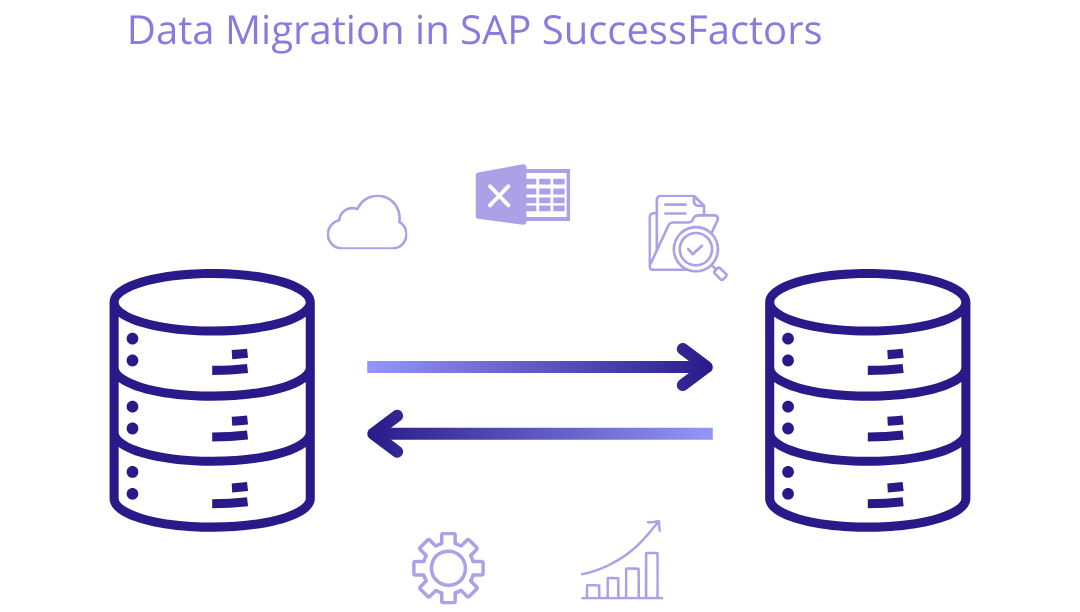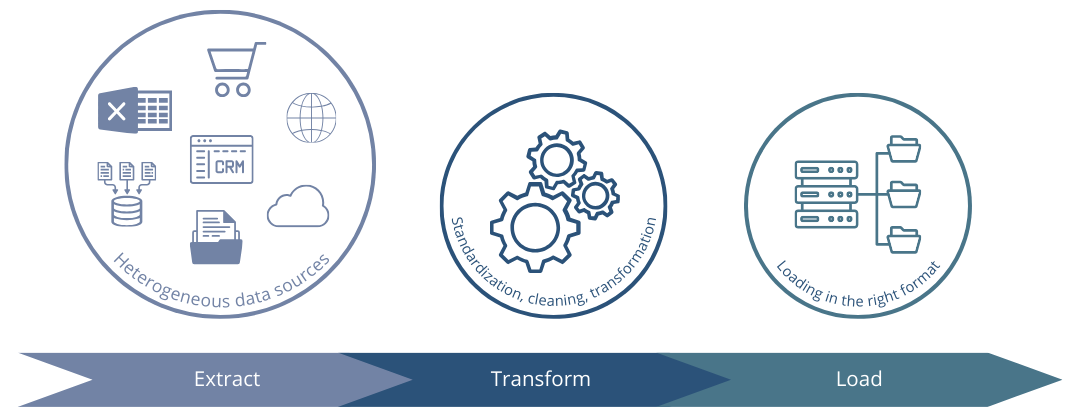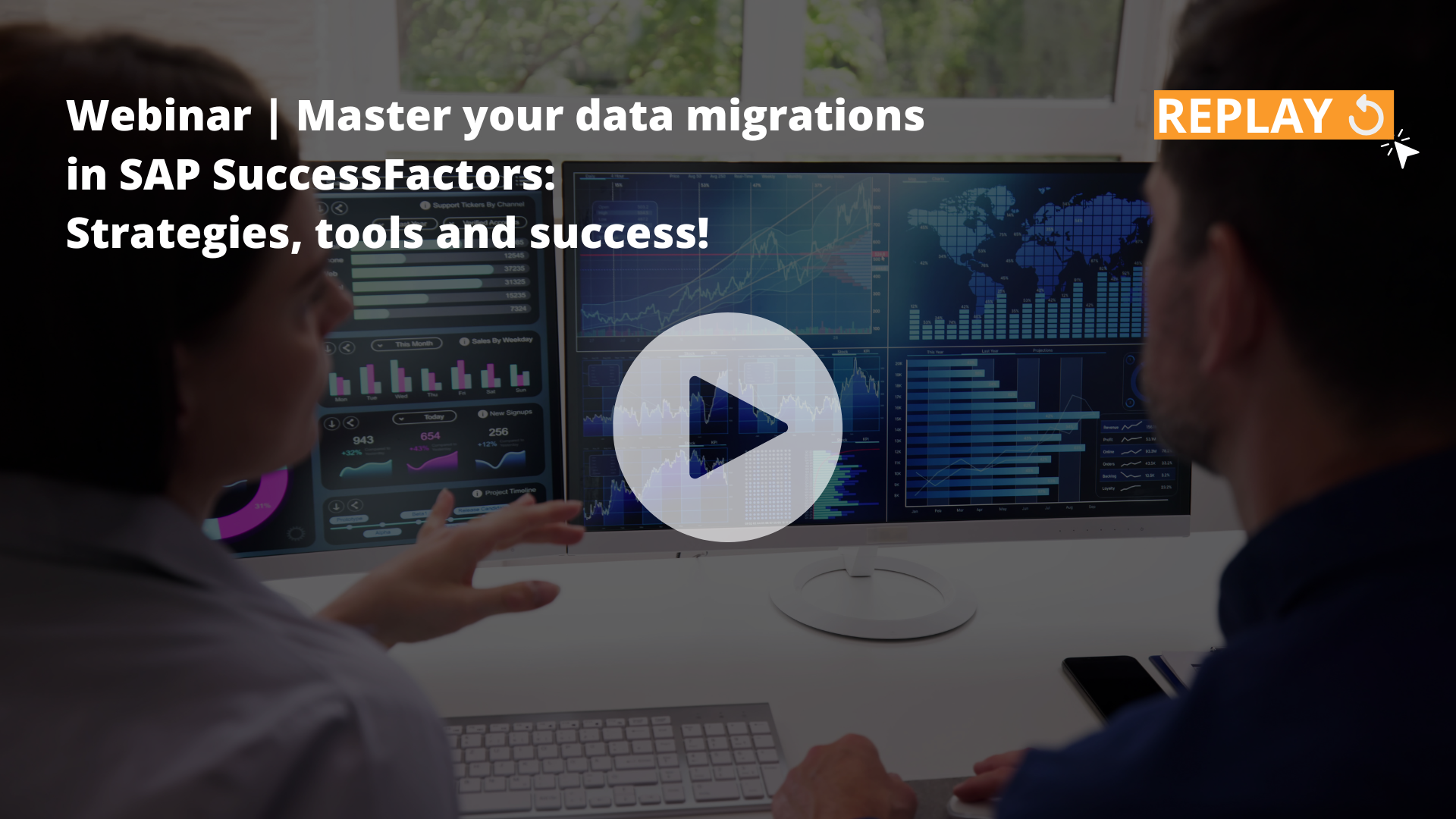The Data migration into SAP SuccessFactors is much more than just a technical operation; it is an essential strategic lever for the success of your digital transformation projects. This key process plays a crucial role in data quality, l'business process efficiency, and theadoption of new solutions.. A successful migration is therefore essential to optimize performance and ensure a smooth transition to the new system.
What is Data Migration?
Data migration involves identifying the essential data present in your existing (legacy) systems and transferring it to a new environment, such as SuccessFactors. This process must be carried out within a precise timeframe, particularly during cut-over, the key moment when the transition to the new system takes place. The data quality, their availability and their precise location in the system are essential to ensure that business processes run smoothly business processes. Indeed, data migration is much more than a simple transfer: it's a major strategic challenge in terms of timing, accuracy and compliance.
The Data Migration Process : A Three-Phase Method
At CLAP Partners, we've perfected a tried-and-tested method to ensure efficient, risk-free migration. Our three-step process is based on the ETL method: Extraction, Transformation and Loading.
1. Extraction: Secure data recovery
Data extraction is the first key step in any migration. It involves recovering data from the source system while minimizing the risk of loss or alteration. This phase includes :
- Identification of data sources and secure access to them.
- Use of appropriate extraction tools (ETL, SQL scripts, APIs, connectors).
- The implementation of backup mechanisms to prevent any incident.
In this first stage, technical-functional knowledge is essential in order to define the right perimeter to extract in order to find the right balance between functional requirements and the amount of work to be delivered.
2. Transformation: Cleaning, enrichment and formatting
Once extracted, the data must be prepared for integration into the new system. This step is designed to ensure data quality and compliance with SAP SuccessFactors requirements. It includes :
- Data cleansing: eliminating duplicates, correcting errors, standardizing formats.
- Enrichment: addition of data not already present in legacys systems thanks to the functional teams, structuring of information, conversion of incompatible formats.
- Validation: implementation of quality gates and automated tests to ensure data integrity.
3. Loading: Integration of data into the new system with rigorous testing
Data loading is the final phase in which the transformed information is transferred to its new environment. This stage requires :
- Process automation to limit manual intervention and reduce errors.
- An in-depth testing phase including consistency checks and performance tests to verify the stability of the new system.
The three-phase method for the data migration process - CLAP Partners
Risks of Data Migration and How to Avoid Them
Although data migration offers many advantages, it also entails risks that can compromise the success of the project. Among the most common are:
- Data Loss : A faulty extraction or loading process can result in the loss of critical data.
- Human error : Manual intervention can lead to errors, which is why automation is so important.
- Format incompatibility : If data is not properly cleaned or transformed, it may be incompatible with the new system.
To prevent these risks, we apply strict control mechanisms at every stage of the migration process. Automated tests are carried out to validate data integrity, and regular backups are made to ensure that no information is lost.
Flexible Approaches to Data Migration
At CLAP Partners, we offer two flexible approaches to data migration, tailored to your company's needs and capabilities.
1. Full support from our expert consultants
- We'll guide you through the strategy and data collection process. Once this stage has been completed, we'll assemble and import the data into the system.
Benefits :
- Faster start-up: Our consultants are experienced and specialized in data migration projects, enabling fast and efficient implementation.
- Less work for your teams: By outsourcing this critical phase, you reduce the pressure on your in-house teams.
2. Training and autonomy with our support
- In this approach, we train you to manage your data migration, then you take the reins to operate the migration autonomously, with an expert consultant at your side to assist you and answer any questions you may have.
Benefits :
- Complete system ownership: You take control of the entire process, and become fully autonomous in managing your migration.
- Ability to carry out migration and adjustments independently: You have full control over the migration process and any adjustments required after implementation.
Conclusion
Data migration is much more than a simple transfer of information: it's an opportunity to transform and optimize business processes. With an expert, methodological and tool-based approach, CLAP Partners supports companies at every stage of their migration project, guaranteeing security, compliance and performance.
Webinar replay
Missed our webinar? No problem! A replay is available so you can enjoy this not-to-be-missed event at any time: consult the replay.
Would you like to find out more? CONTACT US



